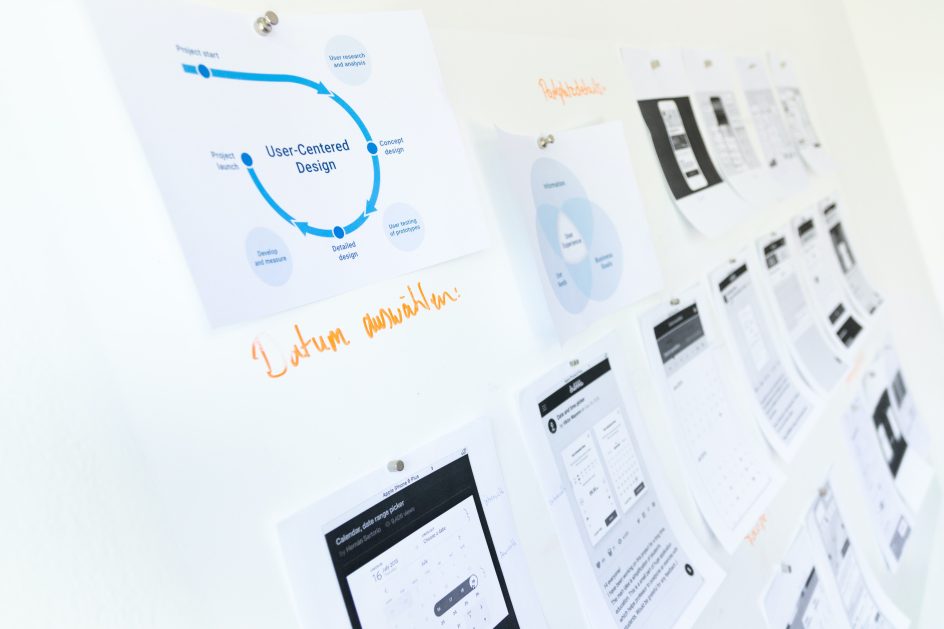
(Self-)service Design Helps to Improve Digital Customer Experience
Customers are expecting service more in digital channels, especially during Covid-19 pandemic. Just like any physical experience, a great online experience needs to be considered from the customer’s point-of-view. Service design methods and tools help to develop digital services continuously.
This article is written based on Master’s thesis: Improving Customer Journey with (Self-)Service Design – a Better Customer Experience in a Web store X. The case study utilizes service design approach to define ways to improve the customer experience in a web store and to observe how to build understanding about the customer experience.
Customer should always be in a focus
In the 2020’s, customer’s expectations are higher than ever before. Consumers are exploring companies more intensely and comparing their experiences within the brands, to achieve easy, quick, and personalized experiences. In every business strategy, customer should always be in the focus. (Gupta, p. 2020.)
It is important to develop empathy for the customers by recognizing and understanding the emotions, thoughts, and motives of the target group. The basic requirement to find customer’s needs with empathy is immediacy with the customers and engaging with conversations, trying to experience the situations through customer’s eyes. (Lewrick et al. 2018, pp. 72–73.)
Effortless (self-)service experiences
While forced to stay at home during global lock down due to pandemic, society has discovered the latest technologies. In real time, the modern customer can find a large variety of products available, their features, view recommendations of other customers, choose the most suitable delivery time and method, and make an online payment by a few clicks via mobile phone. (Dumanska et al. 2021.)
When designing digital self-services, the focus should be on making the self-service experience effortless by utilizing UX design.
– Stokes (2018)
User experience (or UX) often means the overall satisfaction a user gets from interacting with a product or a digital tool and when designing digital self-services, the focus should be on making the self-service experience effortless by utilizing UX design, as Stokes (2018) presents.
The six qualities that affects good UX by Stokes (2018, pp. 89-90):
- Findability
The service is easy to be found. It appears among the firsts in the search results, and the information can be found quickly on the site.
- Accessibility
The service is possible to use when needed. The site works on a mobile device even with a slower internet connection. The service is accessible and possible to use also by a disabled person.
- Desirability
The user is willing to use the service. The experience is pleasant, and it is not frightening to log in.
- Usability
The service is easy to use: the tools are intuitive and can be found easily.
- Credibility
The service is trustworthy and legitimate.
- Usefulness
The service adds value to the user and gives something out of the time spending interacting with it.
When applying UX principles in self-service design, the company gets their digital tools working fast, with a better functionality, and at a lower cost than before. Cutting the unnecessary features and elements allows focusing on the core user experience. Services are easier and more affordable to maintain, upgrade and support within multiple platforms. (Stokes 2018, p. 90.)
Self-service helps to bring personalized engagement, to increase customer satisfaction, and cost reduction.
– Leggett (2019)
A good self-service design allows company to engage with their customers digitally. Self-service helps to bring personalized engagement, to increase customer satisfaction, and cost reduction. Customers are seeking self-service content for peer support and recommendations. The insights from recommendations also help companies to develop their products and services to suit customer demand. (Leggett 2019.)
A better customer experience in a web store
A concept was created in the thesis based on the main findings from the research and design process. The concept summarizes the needed actions to achieve a better customer experience of a web store.

Pre-service
- Get to know the target group of the service by building empathy with the customers and reach and engage them with targeted marketing.
- Use store-specific campaigns, discount codes and communication about the products to attract customers to buy and create value for them.
During the service
- Focus on mobile usability and simplicity.
- Provide effortless user experience by easy findability and navigation on the site.
- Utilize product recommendations and comprehensive product information that support customer’s decision making.
- Provide an easy access to the customer service and a possibility to find the answers easily 24/7, such as a FAQ page or a chat bot.
- Ensure transparency of information and effortless and safe payment process.
Post-service
- Provide a possibility to track the delivery. Have effortless delivery methods available, such as higly demanded parcel locker.
- Understand the central role of recommendation in customer experience, and think how to thank loyal customers who, for instance, recommend the products on social media.
- Utilize systematic feedback collection, including the customer experience of both: products and services, to be able to continuously develop both.
Other themes
- Consider the possibilities of Artificial Intelligence, such as targeting, process automation and marketing automation, such as chat bot and SEO (= Search Engine Optimization.)
- Take the environmental impacts into consideration, including product quality and environmental-friendly delivery and transparent communication of them.
- Utilize service design methods and tools to develop the web store continuously.
Master’s School student Anniina Ahokas utilized different service design methods and tools in her thesis Improving Customer Journey with (Self-)Service Design. The outcome of the thesis is that the web store companies have several possibilities to find out the customers’ point of view in order to further develop the customer experience before, during and after the purchase.
Reference
Ahokas, A. (2022). Improving Customer Journey with (Self-)Service Design. Turku University of Applied Sciences, Master’s Thesis.